info@business-as-visual.com | +49 175 2273106
Target Images & Strategy Images
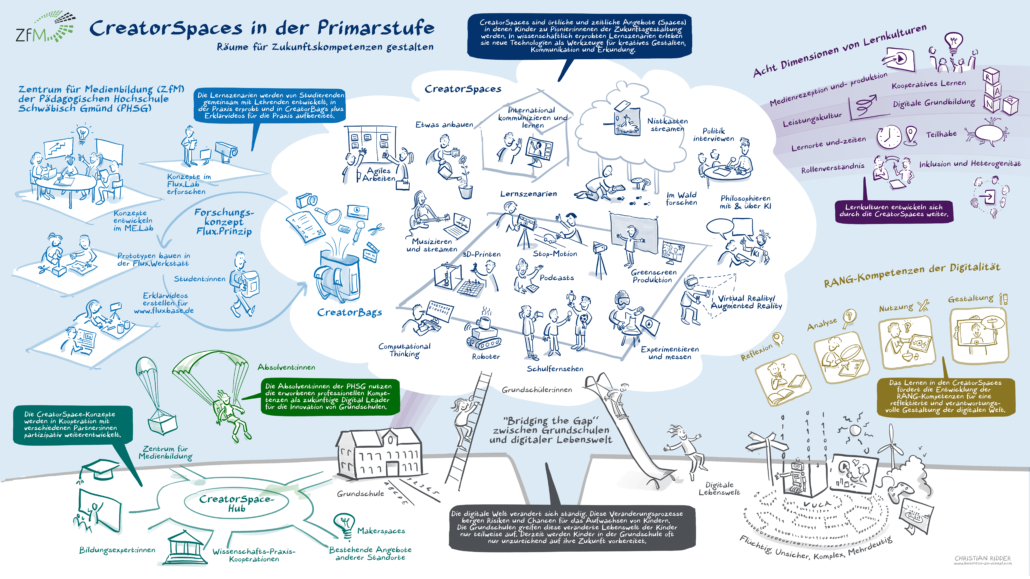

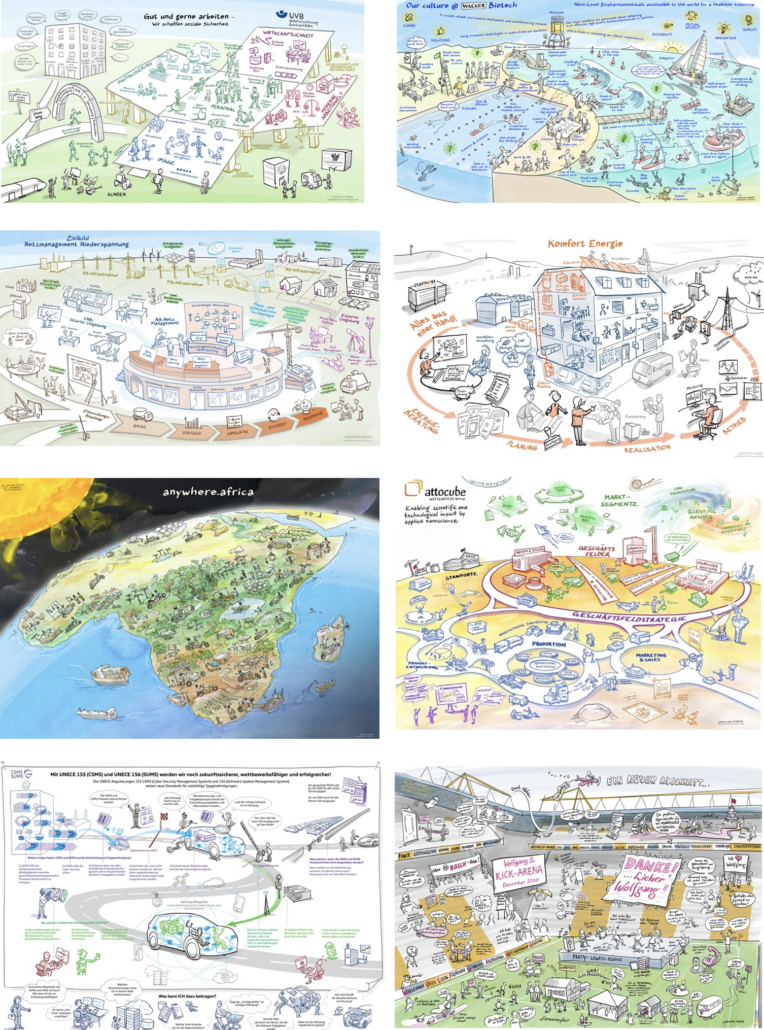

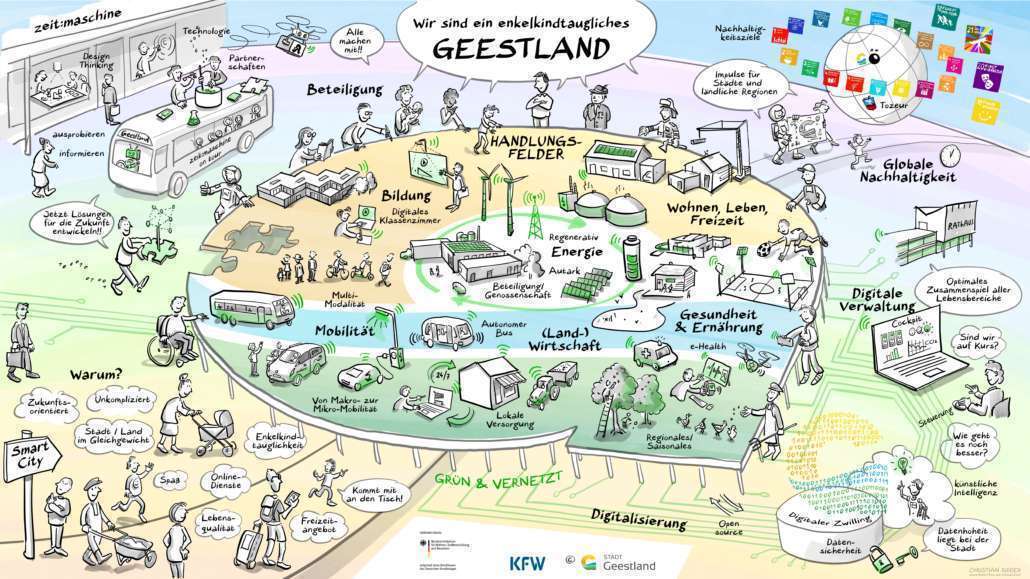
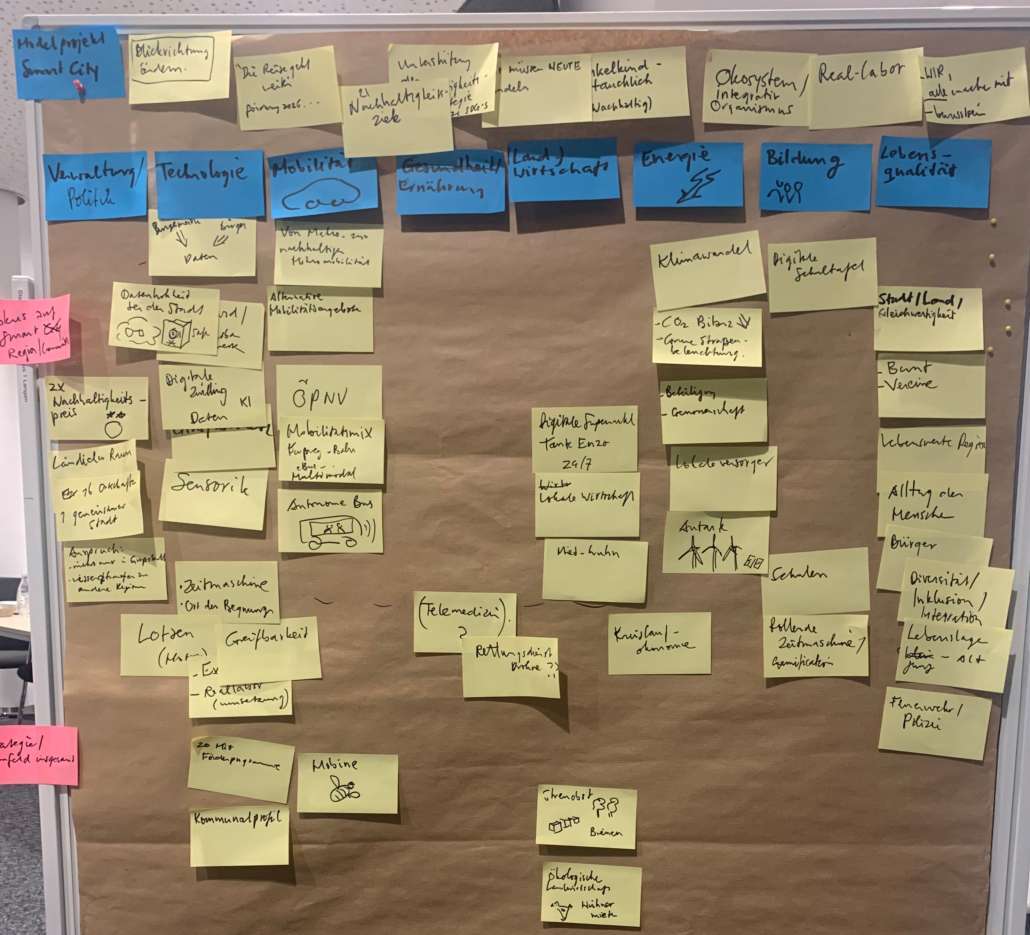

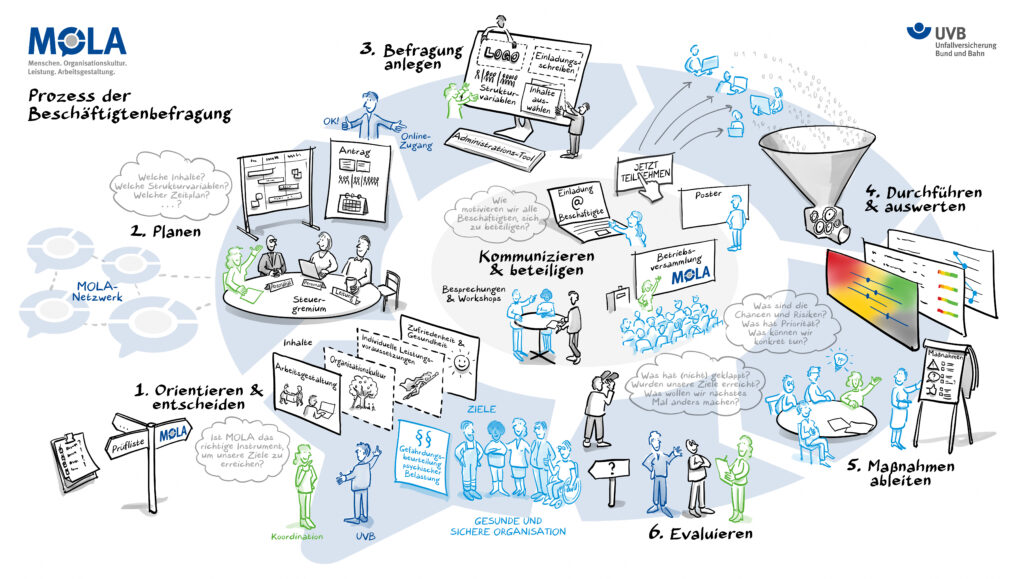
A target image, often also called a strategy image or vision image, visualizes the many facets of a complex issue. This can include corporate visions, a market strategy, various aspects of corporate culture, or a multifaceted process flow.
The intensive collaboration in conceptualizing the strategy image or target image leads to a better understanding of the topic on both sides. During the process, ideas are deepened and sharpened, or “blind spots” are uncovered. My contribution therefore has not only an artistic but also a consulting component. Furthermore, I help to optimally adapt the result to the client’s communication scenarios and channels. In my book “Business as Visual. Understanding, Designing, and Steering with Images”, I delve deeply into my approach and provide detailed instructions for various application scenarios.
The initial situation and practical conditions are different for each client. Often, some preliminary work has already been done, and potential content for the target image is available, e.g., a SWOT analysis, a Balanced Scorecard, guidelines, or a process map. Ideally, these are not “final” and new insights from the visualization process can still be incorporated. Even if the context and content for each target image are individual, the development follows the same pattern: 1) Conception, 2) Elaboration, and 3) Further formats and manifestations.
Normally, the design of the image takes place in a joint conceptual workshop. The workshop preferably takes place in person, but can also be done online. I either moderate myself, or I coordinate closely with the workshop moderator.
Before we start the conception, target groups, objectives, and practical application scenarios for the target image are discussed. This is important so that everyone can think and decide with the same mindset during the conception: What information is relevant? How detailed should it be? What tone suits the target group? How should the image be elaborated?
The individual steps of the conception process are as follows:
What should be immediately apparent from the target image? To avoid getting bogged down later in the process, it’s important to capture the central message(s) of the image early on. The core messages often also form the basis for the heading, possible image metaphors, or speech bubbles that explain the most important scenes in full sentences.
In a moderated group dialogue, we collect information building blocks for the target image. The building blocks are written on Post-its and clustered. Typical questions can be:
While collecting, I listen “between the lines”: What logic or narrative do the participants have in mind? What visual language is being used? With quick sketches on the flipchart or iPad, I show initial approaches for the image.
Sometimes I also use the Business-as-Visual card set to encourage participants to translate their thoughts into metaphorical imagery.
Once we have found suitable image motifs and agreed on a rough basic structure for the visualization of the strategy or target situation, I create a detailed sketch of the strategy image or target image in about 2 hours. In the meantime, the workshop participants dedicate themselves to other topics.
Finally, the sketch is presented, discussed, adjusted, and supplemented. Often, “new people from the target group” who were not involved in the development are invited to the feedback round. What is the first impression? Does the core message come across? Which scenes are ambiguous? Are important keywords still missing? Does the heading fit?
With the corrected working status, I go to the studio and elaborate the image.
The basis for the visualization are hand drawings that I create on the iPad with ProCreate. The image material is assembled, edited, and labeled in Photoshop. Normally, it takes about two more feedback and correction loops until everything is perfect. The size of the image is often tailored to 16×9 screens. With a resolution of 8000×4500 pixels, the image can also be printed as a poster in a size of up to approx. 240 x 135 cm.
Once the foundation is created, further work results can be derived. E.g.:
The content of a strategy image or target image is usually very diverse and complex and can easily overwhelm. Therefore, it is often good if the individual image areas are presented step by step and in a logical sequence. I create an animated PowerPoint for this, built from isolated image elements and editable text fields. The 4K resolution format is also suitable for presentations on XXL screens.
From an animated PowerPoint, the step to a simple explainer video is not far. Together, we write the script for the narration and produce the audio recording. The timing of the animation is adapted to the narration. Finally, the video is set to sound effects and suitable background music. The two- to three-minute video is formatted as an HD mp4 file and is also suitable for the internet, trade fairs, customer presentations, or social media. See also “Explainer Videos”
The individual image elements of the visualization are cut out, isolated, and saved individually. This “clipart” can be used by the client, e.g., in presentations, brochures, or training materials. The consistent application of the image fragments beyond the target image helps viewers understand the connection to the bigger picture. The individual png files have a high resolution and are suitable for both online and print applications.
Sometimes the target image or strategy image is not only to be created in 16×9 but also in another format, e.g., A0. In this case, I adjust the size and layout of the visualization accordingly in Photoshop. The individual graphic elements are rearranged without distortion.
The image is formatted print-ready according to the printer’s specifications (format, bleed, color profile, and resolution).
Usually, it is clarified in advance which work results are needed. However, sometimes this is only decided in the course of the process.
The price range on the market for a target image or strategy visualization is very wide. My pricing takes into account the following factors, among others:
My prices usually range between €4,000 (an image based on an online briefing for a clearly defined starting point) and €12,000 (one-day on-site workshop, elaboration as an image, PowerPoint, and explainer video).
Are you planning a conference, corporate event or workshop and would like to find out more about the benefits and practicalities of graphic recording?
Or would you like to communicate complex issues in a visual and easy-to-understand way and learn more about the joint development of vision, strategy and target images?
If you would like to visualize yourself, you can find out more about training opportunities and my book and card set “Understanding, designing and controlling with images” here
In the download store you will find PowerPoint and workshop templates with metaphorical images.